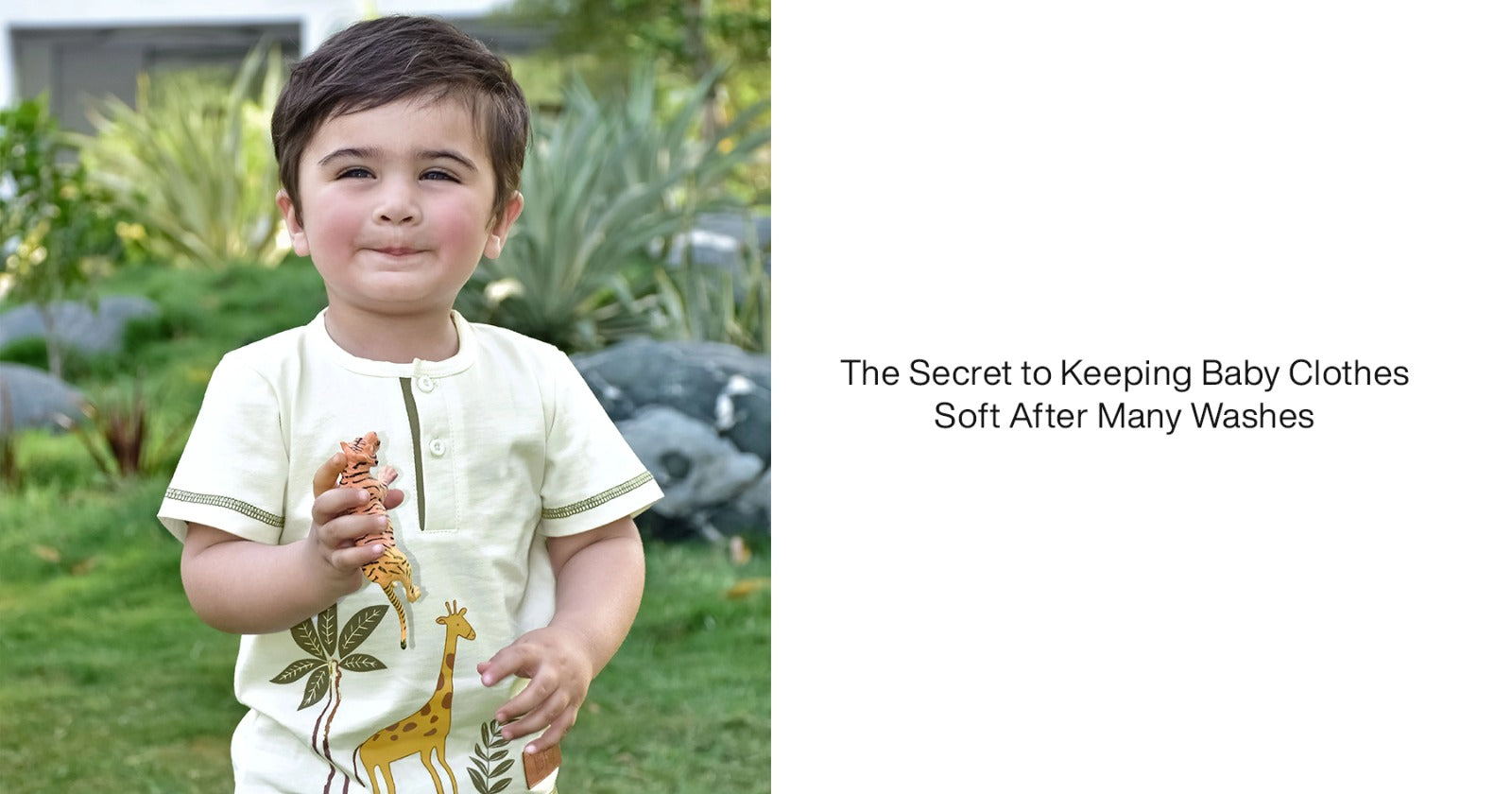As winter approaches, parents and carers begin the critical process of preparing for colder weather. Choosing the right infant winter clothes is especially crucial since their fragile skin and tiny bodies need special care to provide warmth, comfort, and safety. The fabric used in newborn winter garments plays an important part in keeping tiny ones warm on cold days. In this post, we will look at the finest materials for newborn winter outfits and what to look for while buying to keep your baby warm and comfortable throughout the season.
Why Fabric Choice Matters
When it comes to preparing newborns for winter, fabric selection has a big influence on their comfort and health. Infants cannot control their body temperature as well as adults, so it is critical to choose fabrics that provide warmth while still being kind on their tender skin. Furthermore, breathable materials help reduce overheating and moisture accumulation, which can cause discomfort or skin irritation. Understanding the qualities of various textiles can allow you to make more educated judgements about your child's winter outfit.
Key Considerations When Choosing Fabrics for Infant Winter Clothes
Before delving into the finest materials for newborn winter garments, it's important to grasp certain crucial factors that will influence your purchasing decisions:
1. Warmth
The fundamental purpose of winter clothing is to offer warmth. Fabrics with insulating characteristics trap air and hold heat, keeping babies warm in chilly weather. Look for fabrics that provide adequate thermal insulation to keep your infant comfortable without overheating.
2. Breathability
Breathability is just as crucial as warmth. Moisture-wicking fabrics assist regulate body temperature, lowering the danger of overheating. Breathable materials also reduce sweat accumulation, keeping your baby dry and comfortable.
3. Softness & Comfort
Infants have delicate skin that can quickly be inflamed. Choosing soft, hypoallergenic textiles lowers the likelihood of rashes and discomfort. Look for textiles that feel soft on your baby's skin, and avoid harsh or scratchy materials.
4. Ease of Care
Winter clothes for newborns frequently require washing because spills and diaper changes are unavoidable. Choosing textiles that are simple to care for and machine washable can save you time and effort. Check for durability to guarantee the garments can resist several washing.
5. Safety
Make sure the textiles in your baby's clothing are free of dangerous chemicals and poisons. Look for certifications such as Oeko-Tex Standard 100, which shows that the fabric is suitable for infants and children.
The Best Fabrics for Infant Winter Clothes
Here are some of the best fabrics for keeping your newborn warm and comfy during the winter months:
1. Cotton
Cotton is a popular fabric for newborn apparel, and it also works well for winter attire. It's soft, breathable, and hypoallergenic, making it suitable for delicate skin. Cotton alone does not give much insulation, but it may be layered with other textiles to create warmth. Look for heavy cotton fabrics, such as flannel or brushed cotton, that give warmth without compromising breathability.
2. Fleece
Fleece is a synthetic fabric with outstanding warmth and softness. It's lightweight yet offers good insulation, making it ideal for layering in cooler weather. Fleece is also breathable and moisture-wicking, so your newborn will keep dry and comfy. Furthermore, it is simple to care for and dries fast, making it an excellent alternative for busy parents.
3. Wool
Wool is a natural fibre known for its insulation characteristics. It efficiently regulates body temperature, keeping newborns warm in cold temperatures and enabling moisture to leave. Merino wool is ideal for newborns since it is smooth and non-itchy, making it gentle on fragile skin. However, wool takes extra care while washing, so make sure to follow the directions to keep it in good condition.
4. Down and Synthetic Insulation
Down and synthetic insulation materials are commonly utilised in winter gear such as jackets and snowsuits. Down insulation provides good warmth without bulk, although synthetic insulation has similar thermal qualities and is easier to maintain. Look for newborn winter garments that use a combination of these fabrics to provide maximum warmth and comfort. In addition, numerous companies provide hypoallergenic and delicate skin-friendly down alternatives.
5. Thermal Fabrics
Thermal materials are particularly intended to be warm while being lightweight. They are frequently created from a combination of synthetic fibres and may efficiently retain heat close to the body. Look for thermal onesies or base layers that may be worn beneath other garments to provide extra insulation.
6. Polyester
Polyester is a strong and adaptable synthetic fabric that is frequently combined with other materials to increase warmth and comfort. It wicks moisture, dries quickly, and resists wrinkles and shrinkage. When shopping for newborn winter clothing, seek for polyester mixes that offer both comfort and insulation.
7. Velvet
Velvet is a rich fabric that provides extra warmth and comfort. It has a silky texture that feels amazing on the skin, making it ideal for special events or cosy winter clothes. Look for cotton or polyester velvet mixes for simple maintenance and durability.
Layering for Maximum Warmth
When preparing your baby for winter, layering is essential. Here's how to layer different textiles for maximum warmth:
1. Base Layer
Begin with a soft, breathable foundation layer, such a cotton or thermal onesie. This layer should fit tightly against the skin, trapping warmth without creating discomfort.
2. Middle Layer
Add an insulating middle layer consisting of fleece, wool, or a polyester blend. This layer retains heat while allowing for ventilation.
3. Outer Layer
Choose a windproof and waterproof outer layer, such as a winter jacket or snowsuit lined with down or synthetic insulation. This layer protects your newborn from the outdoors while keeping them warm.
4. Accessories
Don't forget to include warm accessories like hats, mittens, and booties made of soft fabrics like fleece or wool. These products help to reduce heat loss from the extremities.
Shopping Tips for Infant Winter Clothes
When shopping for newborn winter apparel, remember the following tips:
1. Check the Label
Always examine the fabric composition label to see what materials were utilised. Choose natural fibres such as cotton and wool, or high-quality synthetic mixes that give warmth and comfort.
2. Consider the Fit
Infants develop rapidly, so select clothing that allows for layering and movement. Look for adjustable elements, such as elastic waistbands and snap closures, to guarantee a proper fit.
3. Opt for Easy Access
Choose clothing with broad necklines or zippers to make dressing and diaper changes easier. This will save you time and relieve the stress of clothing your child.
4. Buy Ahead
Purchase winter apparel ahead of time to ensure you have plenty of alternatives for your child. Keep in mind that newborns might outgrow garments rapidly, so buy one size higher to guarantee a longer wear duration.
5. Invest in Quality
While it may be tempting to go for less expensive solutions, investing in high-quality materials and well-made outfits can pay off in the long term. Quality clothing lasts longer and provides more warmth and comfort.
6. Look for Versatility
Consider choosing multi-purpose apparel, such as onesies that may be worn alone indoors or as a base layer outdoors. Versatile apparel may be combined and matched to expand your infant's wardrobe.
Final Verdict
Choosing the proper materials for newborn winter clothes is critical to keeping your baby warm, comfortable, and safe throughout the colder months. Cotton, fleece, wool, down, and thermal textiles provide the ideal balance of warmth, breathability, and softness. When purchasing for winter clothes, remember to consider fit, ease of maintenance, and safety. With the appropriate fabric selections and strategic layering, you can guarantee that your baby has a cosy and pleasant winter.
By focusing on high-quality materials and careful design, you can safely buy for newborn winter outfits that not only suit the practical demands of keeping your baby warm, but also give comfort and style during the cold months. Happy shopping!









